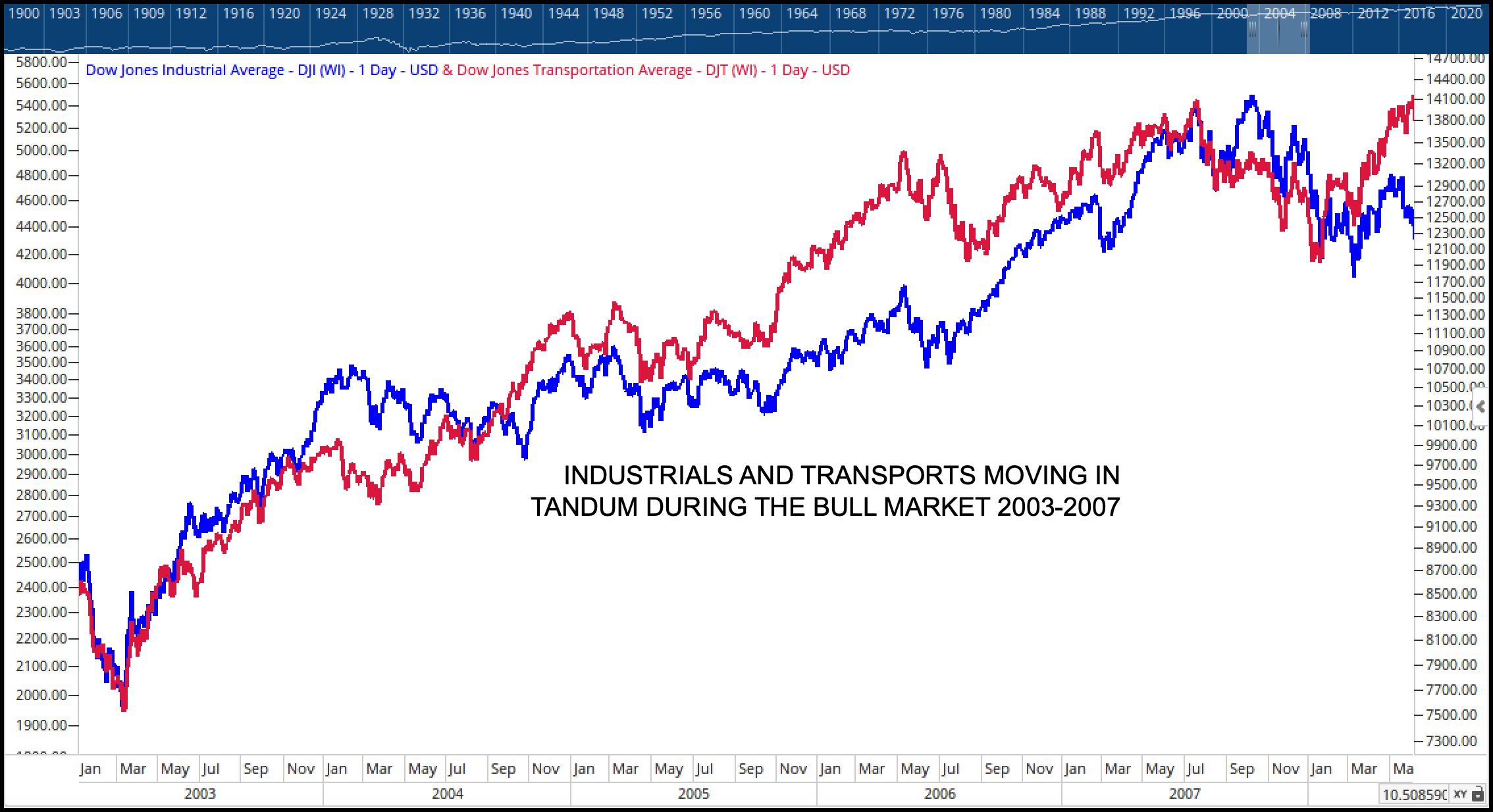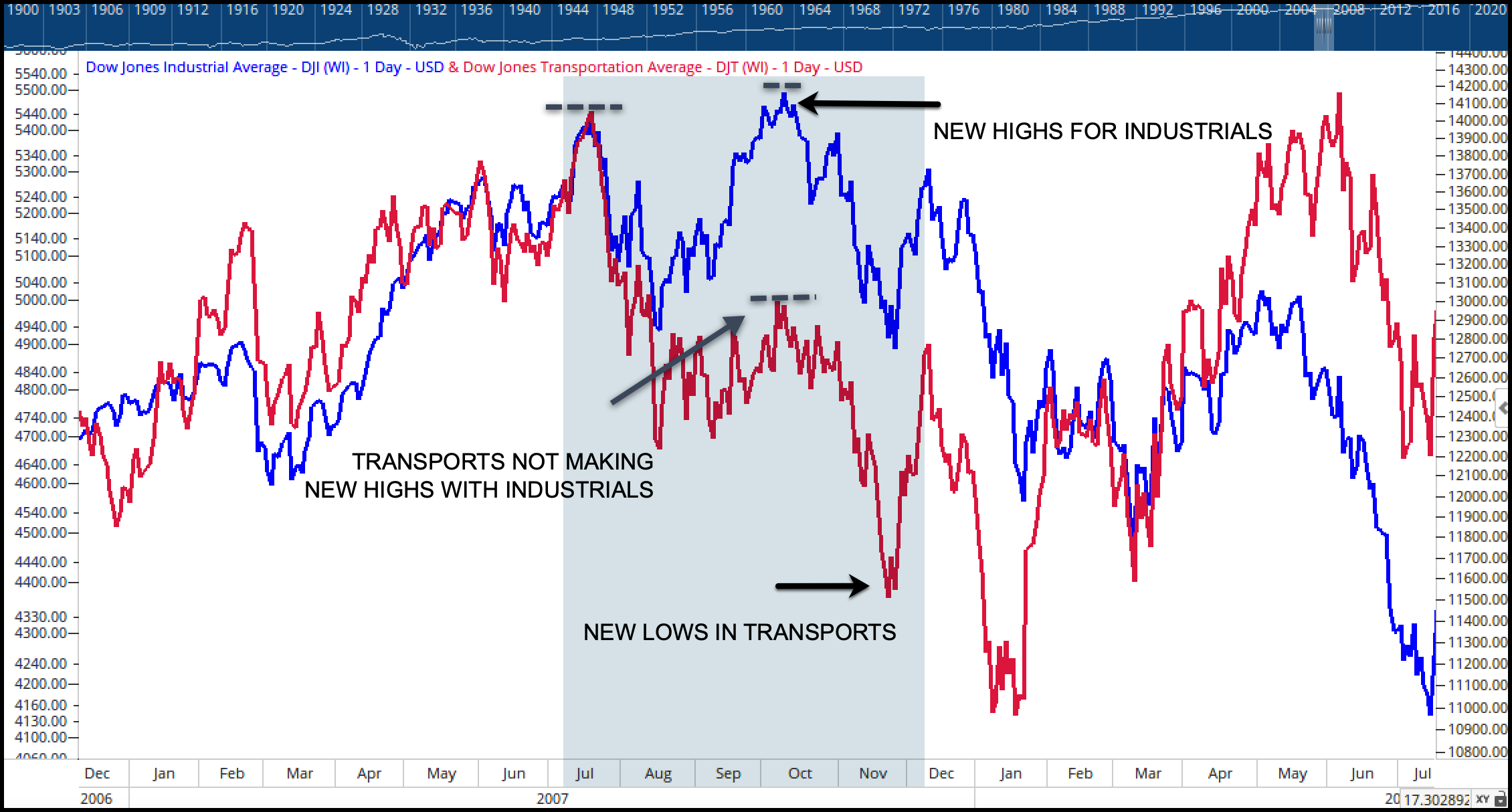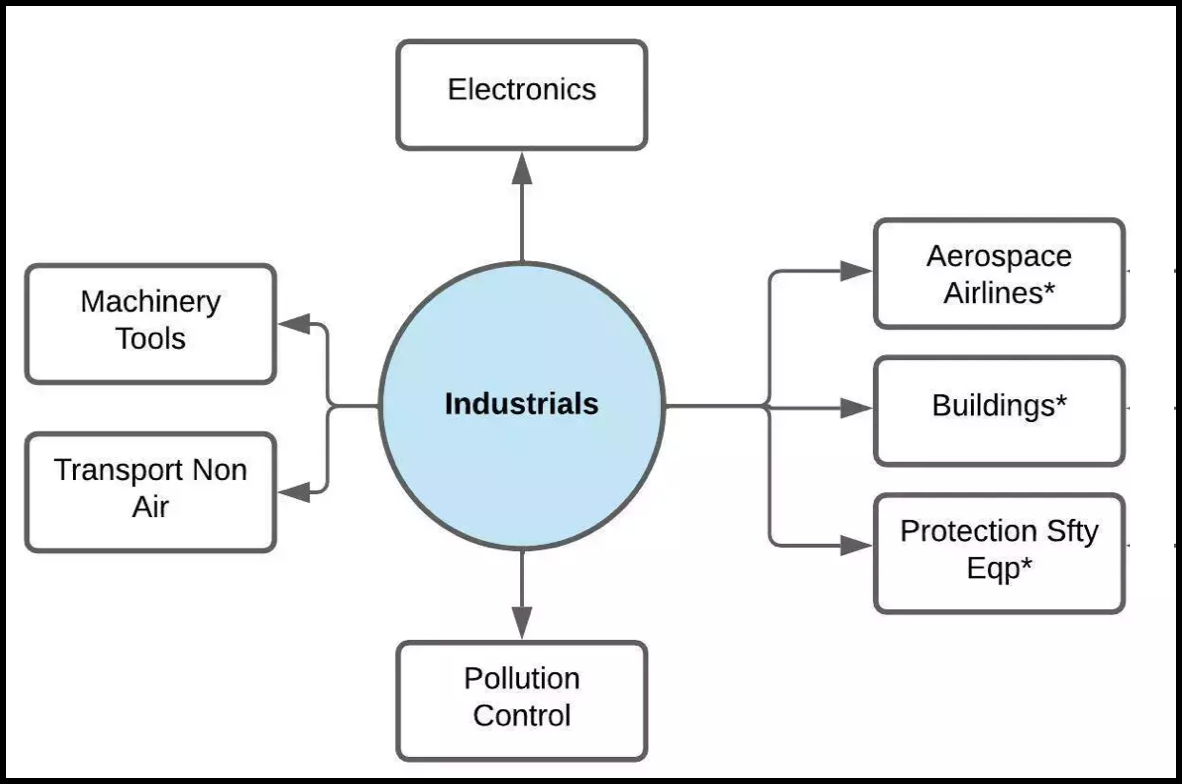Related Blogs
February 9, 2023 | Avalon Team
Today, I’m going to give you one of the oldest measures of the market and economic health I know… it’s one of the originals, as a matter of fact.

Dow Theory is one of the oldest techniques in market analysis and was created by Charles Dow in the 1880s, yet it’s just as relevant today as it was when he put pen to paper.
Charles Dow invented the first two stock market indexes – the Dow Jones Industrial Average (DJIA) and the Dow Jones Transportation Average (DJTA).
In Dow’s time, transports were limited to just nine railroad stocks. Of course, over the years the Transport index has evolved to include Airlines, Trucking, and Shipping.
Dow’s thinking was that in a healthy economy, both industrial and transportation stocks should be rising together.
A growing economy would require more products (produced by the industrial companies) and then these products had to get to market via the transportation companies.
One doesn’t function independently of the other. And Dow intended his indexes to be used as an indicator of economic strength.
Dow Theory holds that the 30 stocks of the Dow Jones Industrial Average and the 20 stocks of the Dow Jones Transportation Average must rise together in a strong economy.
If one of the averages lags behind the other too far for too long, or worse yet, forms a negative divergence, an economic and stock market peak may be around the proverbial corner.
Dow Theory purists will tell you, the first signs of trouble occur when either the DJIA or the DJTA hit a new high, but the other index does not.
It’s best not to forget history.
During the bull market of 2003 to 2007, Industrials and Transports moved in unison.
However, that relationship changed in the summer months of 2007, and turned out to be a warning sign to anyone astute enough to see it.
In July 2007, both the DJIA and the DJTA made new highs.
Into July and August, both averages retreated, followed by Industrials breaking out to new highs in October.
But Transports did not come close to matching their summer highs.
And bingo – there was your divergence and a clear message to the markets.
It was that divergence between Industrials and Transports in the 4th Quarter of 2007 that was a warning sign that the current bull market was on borrowed time.
That divergence showed goods were not being transported at the same rate they were being produced, suggesting a decline in nationwide demand.
Something to know about transportation stocks – these are considered economically sensitive stocks, meaning they are tied to the business cycle.
So they’re especially sensitive to a slowing economy. If demand for goods begins to slow, there are fewer goods to transport.
And that’s what happened back in 2007, well before the Great Financial Crisis crash in 2008.
So that’s history…
Now, what can Dow Theory tell us about today’s market?
Are Dow Industrials and Transports suggesting an economic slowdown?
Is Inflation, higher interest rates, inverted yield curves, or even headline-grabbing layoffs by some of the biggest employers a reason for alarm?
Conventional wisdom would say so.
But let’s check the charts!
Bottom line: With both Transports and Industrials moving higher, there is nothing in the current relationship to suggest there is a problem on the horizon.
However, don’t turn a blind eye on the impact of Fed policy. Just because we’re not seeing price deterioration hit the equity markets today, does not mean we won’t sometime in the future.
And that’s why we’ll keep a close eye on this relationship and any other that may lead to a different conclusion.
But until we see some kind of deterioration under the surface, investors can continue to look for opportunities – while always remaining vigilant when it comes to position-sizing and risk management.
It’s interesting that as of this writing, Industrials have worked their way back into the four strongest sectors, while Transportation – Non-Air is the strongest industry group.
We’re currently seeing both Relative Strength and absolute outperformance from Industrials and Transports.
Industrials are a very diverse sector and the most correlated to the broader S&P 500.
These are the industry groups in the sector to consider.
And here are the current 20 stocks that make up the Dow Jones Transportation Average.
- Alaska Air Group, Inc. (ALK)
- American Airlines Group Inc. (AAL)
- Avis Budget Group, Inc. (CAR)
- C.H. Robinson Worldwide, Inc. (CHRW)
- CSX Corp. (CSX)
- Delta Air Lines, Inc. (DAL)
- Expeditors International of Washington, Inc. (EXPD)
- FedEx Corp. (FDX)
- J.B. Hunt Transport Services, Inc. (JBHT)
- JetBlue Airways Corp. (JBLU)
- Kansas City Southern (KSU)
- Kirby Corp. (KEX)
- Landstar System, Inc. (LSTR)
- Matson, Inc. (MATX)
- Norfolk Southern Corp. (NSC)
- Ryder System, Inc. (R)
- Southwest Airlines Co. (LUV)
- Union Pacific Corporation (UNP)
- United Airlines Holdings, Inc. (UAL)
- United Parcel Service (UPS)
Or you may want to look into one of these ETFs to gain exposure to Transports.
Investors have a choice: Is it Don’t Fight the Fed or Don’t Fight the Tape?
Stock prices have been moving higher for months now in spite of Fed policy and recession worries.
You can sit on your hands and wait for a recession that may come or you can participate in rising prices until it’s time not to.
If you have any questions about what you’ve read in today’s post or have any comments on what you’d like to see in the future – drop us a note!
If you have any questions or have been considering hiring an advisor, then schedule a free consultation with one of our advisors today. There’s no risk or obligation—let's just talk.

Free Guide: How to Find the Best Advisor for You
Get our absolutely free guide that covers different types of advisory services you'll encounter, differences between RIAs and broker-dealers, questions you’ll want to ask when interviewing advisors, and data any good financial advisor should know about you and your portfolio.






